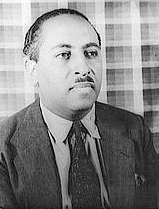
Black History, The Arts

Arna Wendell Bontemp
Arna Wendell Bontemps was an important writer in the Harlem Renaissance. He was born on October 13, 1902 in Alexandria, Louisiana. The family home is now the Arna Bontemps African American Museum and Cultural Arts Center.
From the age of three, Arna lived with his family in the Watts section of Los Angeles. His family moved to Los Angeles just three days before the San Francisco earthquake! His was a loving family. His parents always encouraged him in his education. He attended public schools and graduated in 1916 at the age of 17 from Pacific Union College [U.C.L.A.], having completed his degree in three years. (more…)
Black History, The Arts

Alex Haley
Author of ‘Roots’. Journalist, writer. Alexander Murray Palmer Haley was born in Ithaca, New York, on August 11, 1921. He grew up in Henning, Tennessee, and graduated from high school at age 15. Haley studied at State Teachers College in Elizabeth City, North Carolina, for two years, and joined the Coast Guard in 1939.
He started out as a mess attendant, Third Class, and in 1952 became the first to hold the title of Coast Guard Journalist. Haley’s friends quickly discovered his writing talent and began requesting his help when writing their own love letters. Haley also used his talents to recount the old tales of sea captains, which turned into his first published story. (more…)
Black History, The Arts
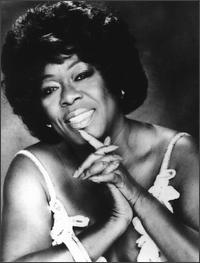
Sarah Vaughn
Born in Newark, New Jersey, in 1924, Vaughan was immediately surrounded by music: her carpenter father was an amateur guitarist and her laundress mother was a church vocalist. Young Sarah studied piano from the age of seven, and before entering her teens had become an organist and choir soloist at the Mount Zion Baptist Church.
When she was eighteen, friends dared her to enter the famed Wednesday Night Amateur Contest at Harlem’s Apollo Theater. She gave a sizzling rendition of “Body and Soul,â€� and won first prize. In the audience that night was the singer Billy Eckstine. Six months later, she had joined Eckstine in Earl Hines’s big band along with jazz legends Dizzy Gillespie and Charlie Parker. (more…)
Black History, The Arts
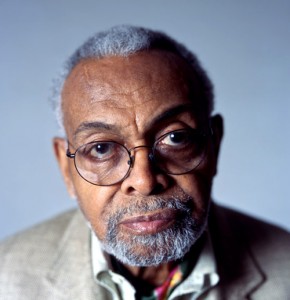
Amiri Baraka
(formerly LeRoi Jones)
Amiri Baraka, born in 1934, in Newark, New Jersey, USA, is the author of over 40 books of essays, poems, drama, and music history and criticism, a poet icon and revolutionary political activist who has recited poetry and lectured on cultural and political issues extensively in the USA, the Caribbean, Africa, and Europe.
With influences on his work ranging from musical orishas such as Ornette Coleman, John Coltrane, Thelonius Monk, and Sun Ra to the Cuban Revolution, Malcolm X and world revolutionary movements, Baraka is renowned as the founder of the Black Arts Movement in Harlem in the 1960s that became, though short-lived, the virtual blueprint for a new American theater aesthetics. (more…)
Black History, The Arts
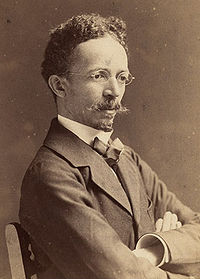
Henry Ossawa Tanner
The son of a minister in the African Methodist Episcopal Church, Henry Ossawa Tanner was raised in an affluent, well educated African-American family. Although reluctant at first, Tanner’s parents eventually responded to their son’s unflagging desire to pursue an artistic career and encouraged his ambitions. In 1879, Tanner enrolled at the Pennsylvania Academy of Fine Arts, where he joined Thomas Eakins’s coterie.
Tanner moved to Atlanta in 1889 in an unsuccessful attempt to support himself as an artist and instructor among prosperous middle class African-Americans. Bishop and Mrs. Joseph C. Hartzell arranged for Tanner’s first solo exhibition, the proceeds from which enabled the struggling artist to move to Paris in 1891. Illness brought him back to the United States in 1893, and it was at this point in his career that Tanner turned his attention to genre subjects of his own race. (more…)
Black History, The Arts
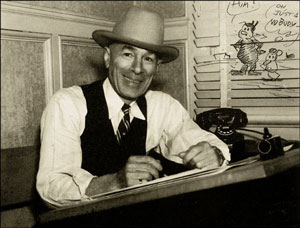
George Herriman
George Herriman III was born in New Orleans in 1880 to Creole parents. The family moved to Los Angeles a few years later and worked with his father as a barber and then a baker where he drove the family bread truck, but his pranksterish attitude frequently irritated his parents, and after baking a mouse into a loaf of bread his parents implored him to perform his pranks elsewhere, and relieved him of his position at the bakery.
In 1900, Herriman emigrated to New York City and in 1901, his first cartoons began to appear in Judge magazine. Shortly thereafter he landed a job at Joseph Pulitzer’s “New York World” and began creating Sunday & daily comic strips for the fledgling medium. In 1906 he left Pulitzer to do a strip for the McClure syndicate, went back to Pulitzer & finally left Pulitzer again to work for William Randolph Hearst at the “New York Journal American”. It would be here that Herriman created his most famous & popular characters, the animal residents of Coconino County, USA. (more…)





